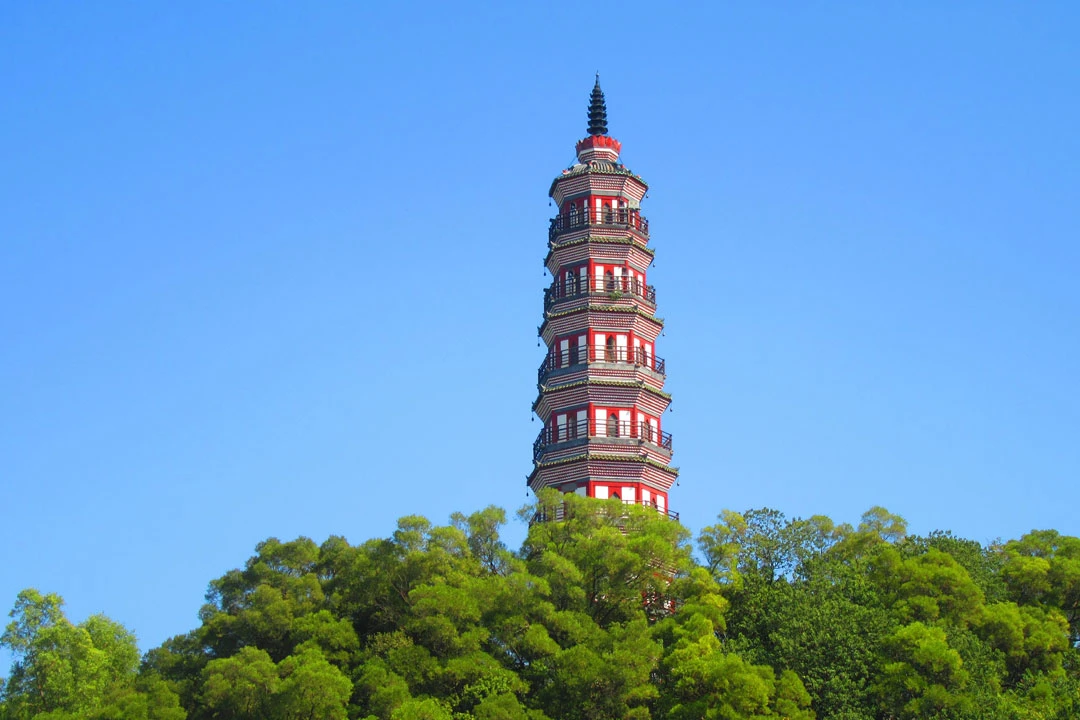In the heart of Jiangxi Province, where the ancient Qingyun Tower stands as a silent sentinel of time, a new chapter in Chinese cinema is being written. The quiet county of Fenxin, long known for its historical landmarks and rich cultural tapestry, has become an unlikely epicenter of artistic ferment. As the cameras begin to roll on "The Three Sisters of Qingyun Tower," (青云塔三姐妹) a film that promises to bridge the gap between local lore and contemporary storytelling, the air is thick with anticipation and the weight of history.
A Filmmaker's Homecoming: Crafting Stories in the Shadow of History
For director Bu Yixian (布一贤), the journey to this moment has been a lifetime in the making. Standing before a gathering of cast, crew, and local dignitaries, Bu's eyes sparkle with a mixture of nostalgia and determination. "As a child," he recounts, his voice carrying across the hushed crowd, "my mother took me to see an open-air film at Ganfang Middle School. From the moment I saw the credits roll, I dreamed of directing a movie in the very place that raised me. Today, that dream becomes reality."

Bu's words resonate deeply with those assembled. In a nation where rapid modernization often threatens to erase the vestiges of the past, his commitment to honoring his roots while pushing the boundaries of his craft strikes a chord. The director's vision for "The Three Sisters of Qingyun Tower" is ambitious – a tale that interweaves the lives of three women against the backdrop of Fenxin's most iconic landmark.
As Bu outlines his approach, it becomes clear that this is no mere vanity project. "Our entire production team is committed to professionalism, dedication, and innovation," he asserts. "We will spare no effort in creating a film of the highest quality and caliber. I will personally oversee every aspect of production, striving to craft a work that will resonate with audiences far and wide."
The Three Sisters of Qingyun Tower
The cast assembled for this cinematic endeavor is a testament to Bu's vision. Leading the ensemble are Liu Fanfei, Chen Jiamin, and Li Bairong, three rising stars of Chinese cinema known for their versatility and depth. Supporting them is a cadre of veteran actors, including the Fenxin-born national first-class performer Liao Jingsheng, and renowned talents Wang Siyi, Lou Xuexian, and Deng Gang.
This blending of experienced and emerging talent mirrors the film's thematic core – the intersection of tradition and modernity. As the first scene is meticulously prepared, there's a palpable sense that something special is unfolding. Cinematographer Zhang Lei, known for his innovative use of light and shadow, works in tandem with local artisans to capture the unique textures and hues of Fenxin County.
"We're not just making a movie," Zhang explains during a brief break. "We're creating a visual poem that speaks to the soul of this place. The Qingyun Tower isn't just a backdrop; it's a character in its own right, one that has witnessed centuries of human drama. Our challenge is to make it speak to a contemporary audience."
This sentiment is echoed by production designer Wang Mei, whose meticulous research into local architecture and customs has informed every set piece and costume. "authenticity is key," she insists. "But so is magic. We want viewers to feel as though they've stepped into a world that's both familiar and enchanting."
Fenxin County's Cinematic Renaissance
The excitement surrounding "The Three Sisters of Qingyun Tower" extends far beyond the confines of the film set. For the people of Fenxin County, this production represents a unique opportunity to showcase their heritage on a global stage. Local businesses have rallied to support the project, providing everything from catering services to handcrafted props.
Li Huiming, owner of a traditional teahouse that dates back to the Qing Dynasty, beams with pride as he discusses the film's potential impact. "For generations, we've told stories about the Qingyun Tower," he says. "Now, through the magic of cinema, those stories will reach people who may never have heard of Fenxin before. It's like our whole community is part of this grand performance."
The enthusiasm is infectious, spreading even to the youngest members of the community. At Ganfang Middle School – the very place where Bu Yixian first fell in love with cinema – students have organized a film club inspired by the ongoing production. "We're learning about every aspect of moviemaking," says 16-year-old Zhao Mei, her eyes shining. "Who knows? Maybe the next great Chinese director is sitting in one of our classrooms right now."
As the sun begins to set on the first day of shooting, casting a warm glow over the ancient stones of Qingyun Tower, there's a sense that something transformative is taking place. It's not just about making a movie; it's about rekindling a connection to the past while forging a path to the future.
Xu Bolin, the artistic consultant for the film and a respected figure in Chinese cinema, perhaps captures this sentiment best in his address to the assembled cast and crew. "Rather than saying that this film will promote Fenxin to the world," he muses, "perhaps it's more accurate to say that Fenxin is making a new contribution to Chinese cinema. May Director Bu continue to build upon his excellent style of creation, where 'the old wine and hometown accent intoxicate the youth, and the fragrance of green rice and cooking smoke is heard again. The gentle water and breeze follow one's footsteps, as heaven's work opens up and creates a new chapter.'"
As the cameras roll on "The Three Sisters of Qingyun Tower," one thing becomes clear: this is more than just another movie. It's a love letter to a place and its people, a bridge between generations, and a bold statement about the power of storytelling to transform lives and communities. In the shadow of an ancient tower, a new legend is being born – one that promises to echo far beyond the borders of Fenxin County.


